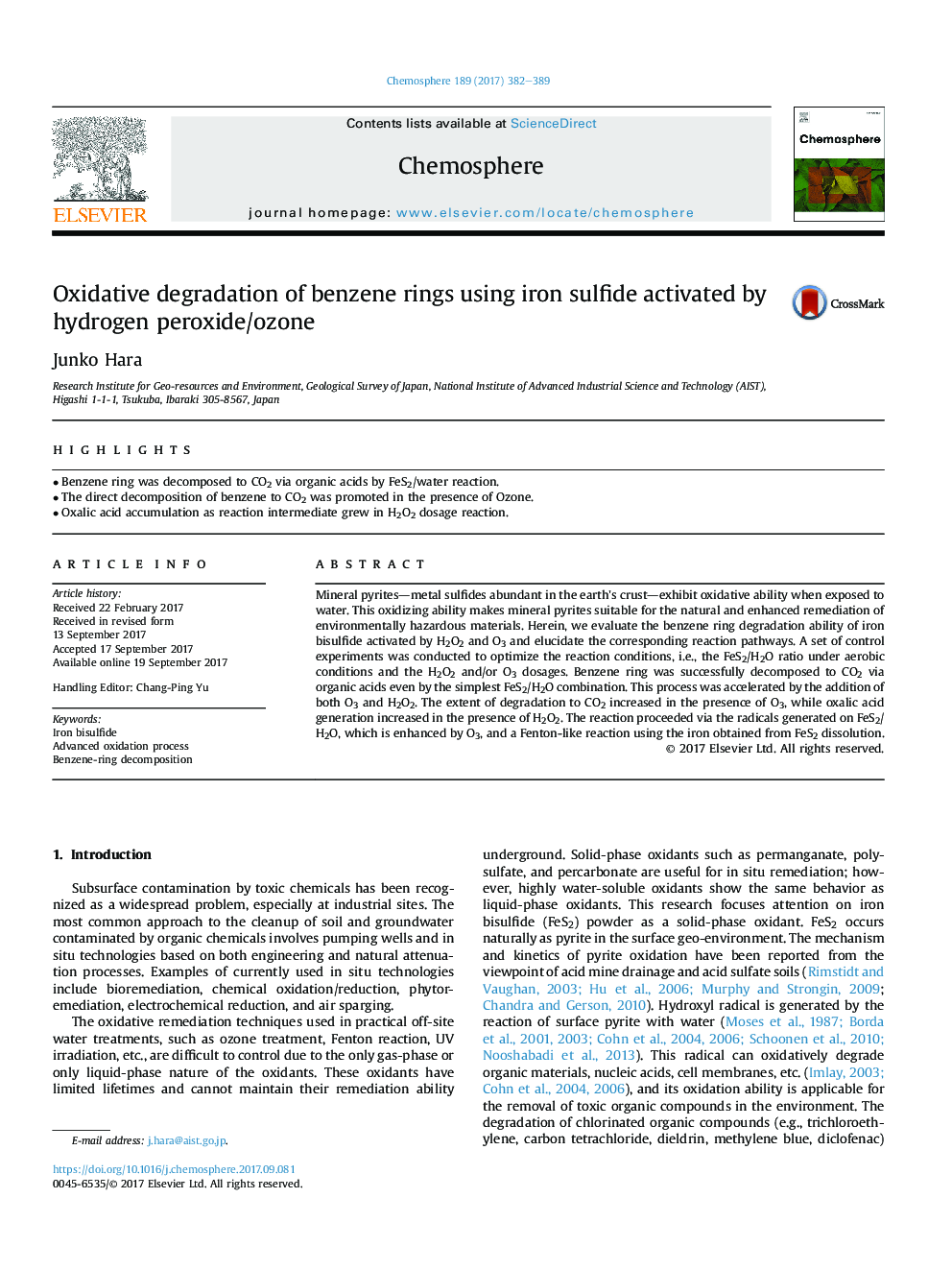| Article ID | Journal | Published Year | Pages | File Type |
|---|---|---|---|---|
| 5745921 | Chemosphere | 2017 | 8 Pages |
Abstract
Mineral pyrites-metal sulfides abundant in the earth's crust-exhibit oxidative ability when exposed to water. This oxidizing ability makes mineral pyrites suitable for the natural and enhanced remediation of environmentally hazardous materials. Herein, we evaluate the benzene ring degradation ability of iron bisulfide activated by H2O2 and O3 and elucidate the corresponding reaction pathways. A set of control experiments was conducted to optimize the reaction conditions, i.e., the FeS2/H2O ratio under aerobic conditions and the H2O2 and/or O3 dosages. Benzene ring was successfully decomposed to CO2 via organic acids even by the simplest FeS2/H2O combination. This process was accelerated by the addition of both O3 and H2O2. The extent of degradation to CO2 increased in the presence of O3, while oxalic acid generation increased in the presence of H2O2. The reaction proceeded via the radicals generated on FeS2/H2O, which is enhanced by O3, and a Fenton-like reaction using the iron obtained from FeS2 dissolution.
Keywords
Related Topics
Life Sciences
Environmental Science
Environmental Chemistry
Authors
Junko Hara,
